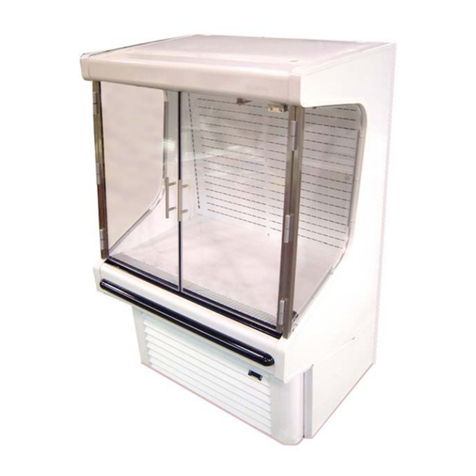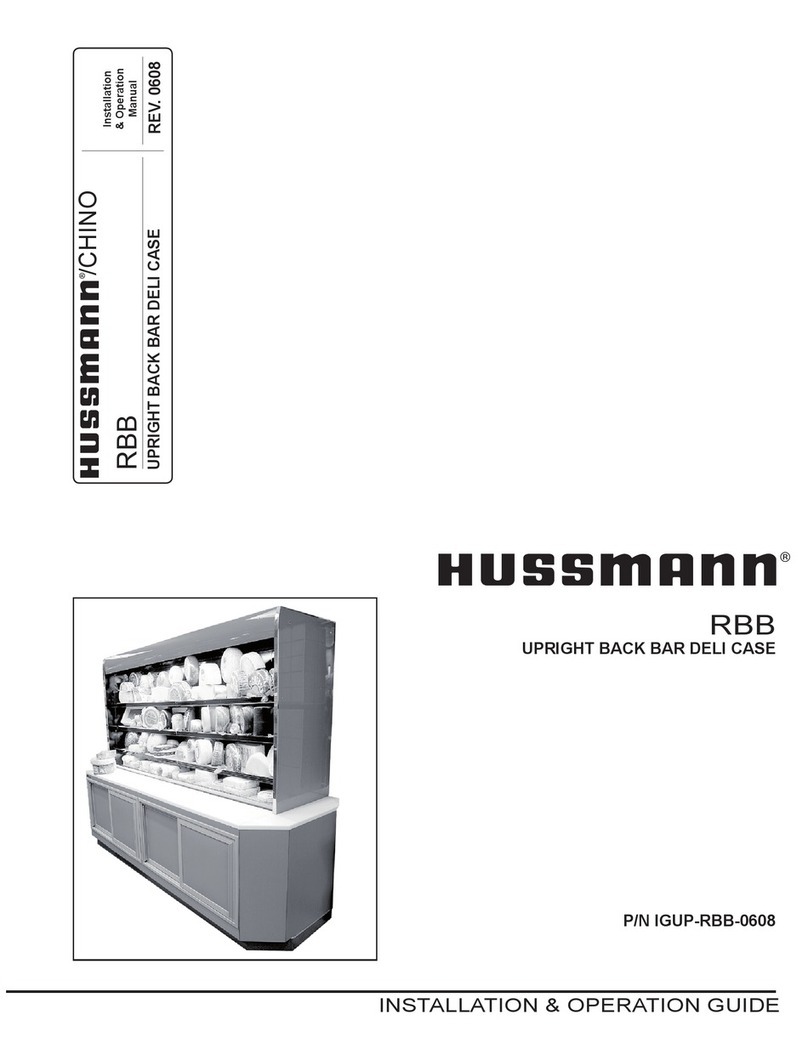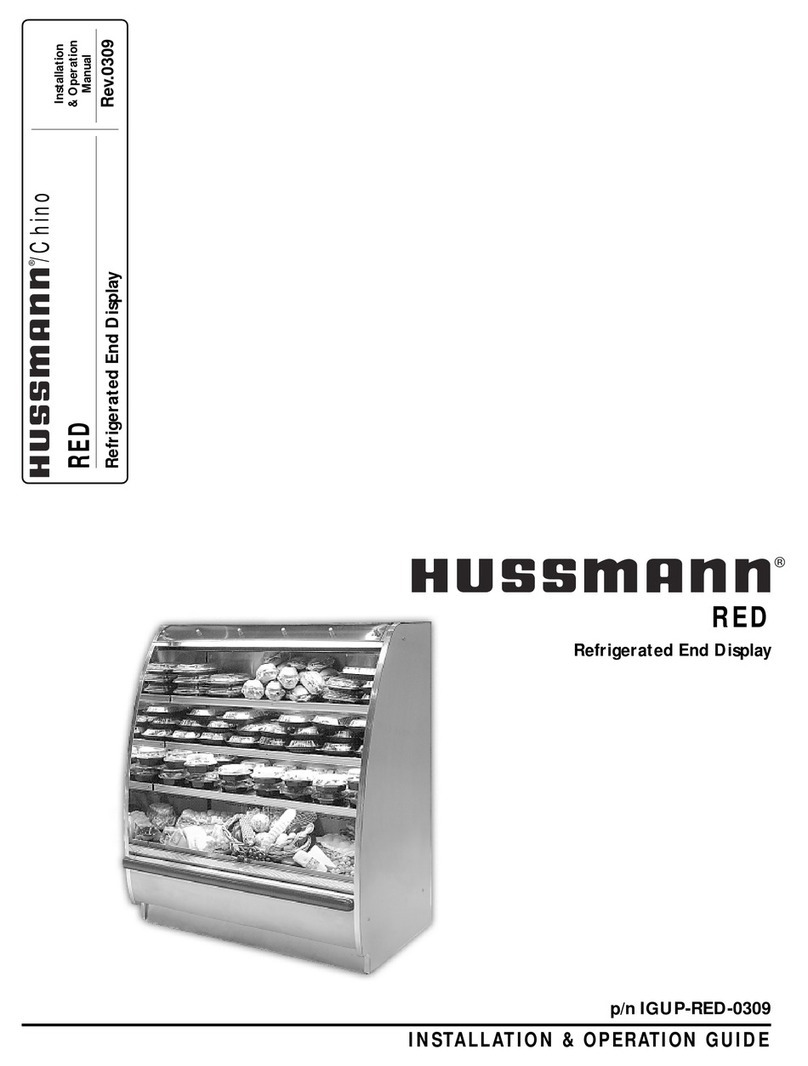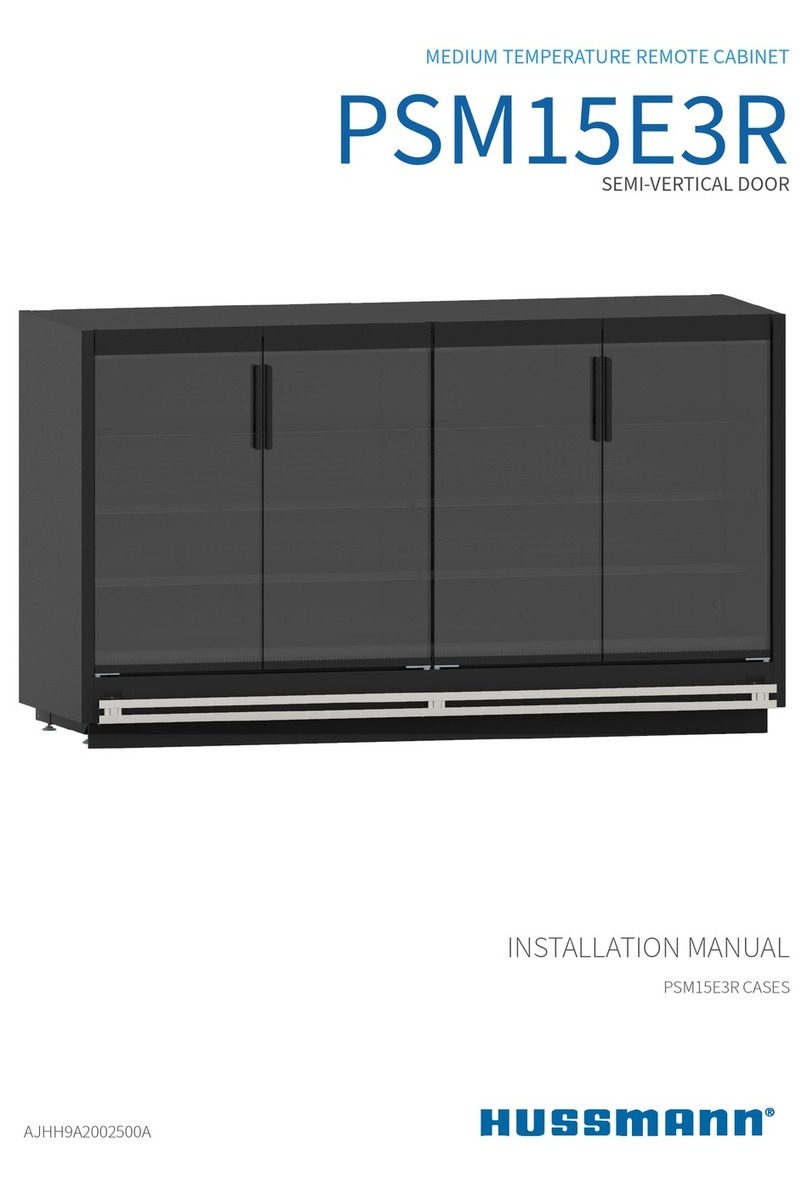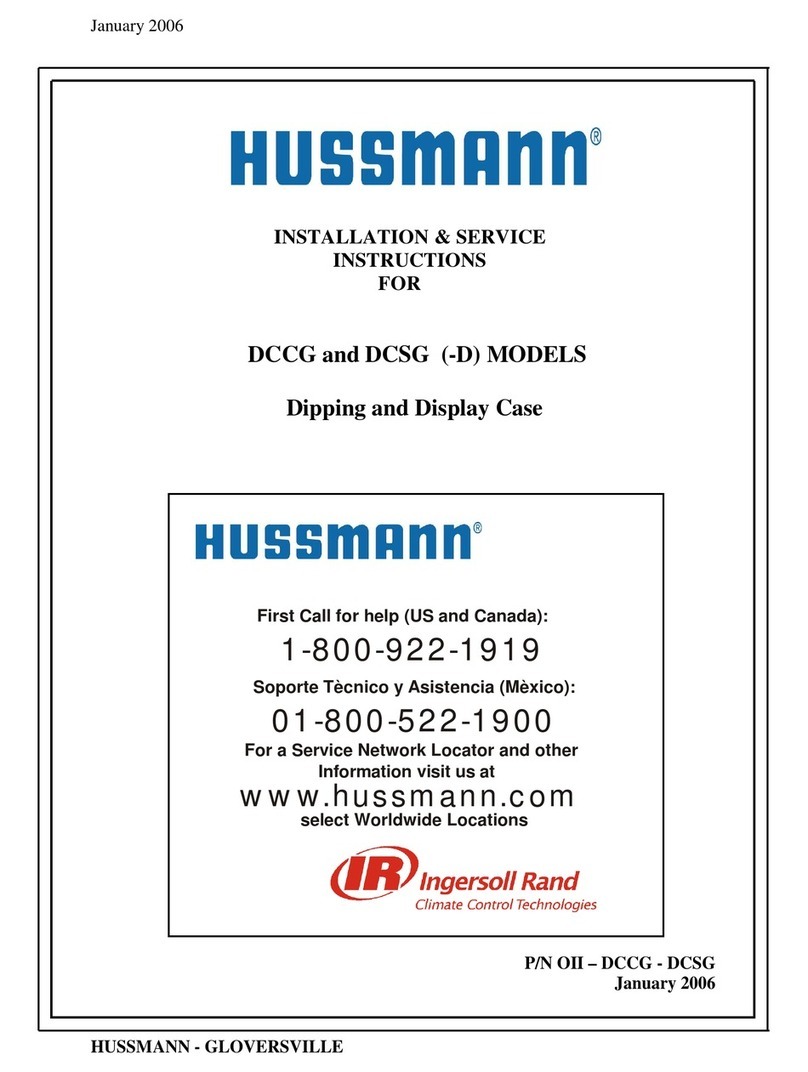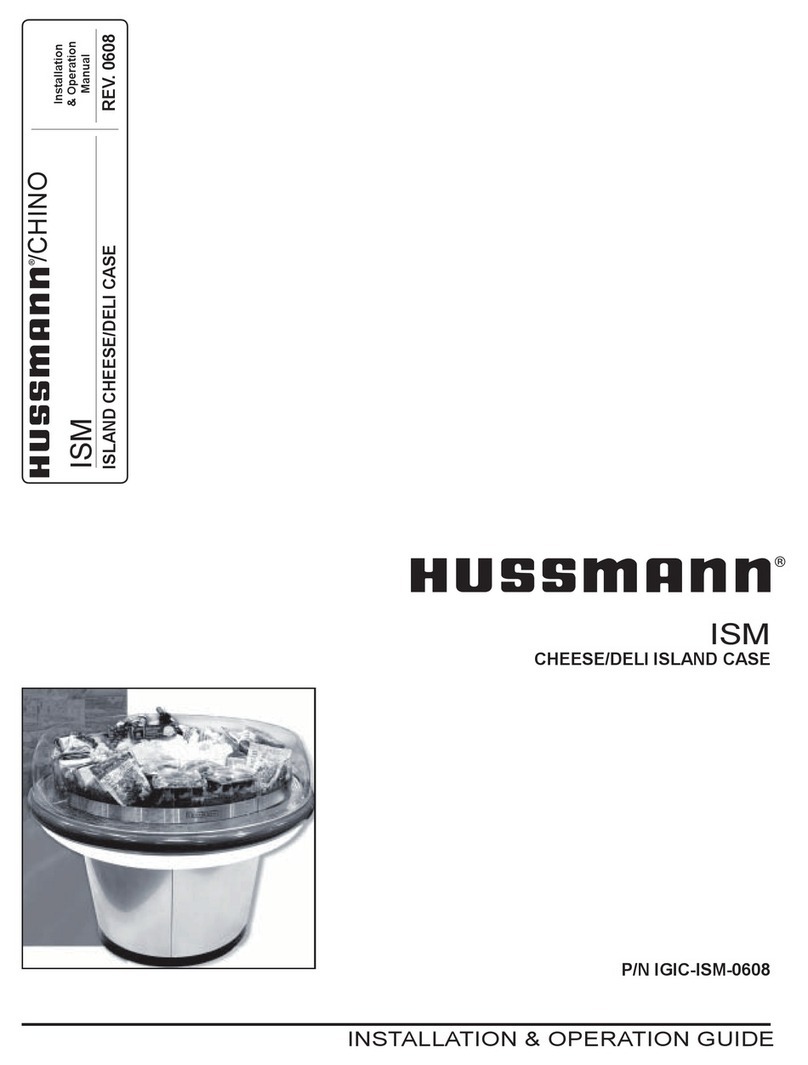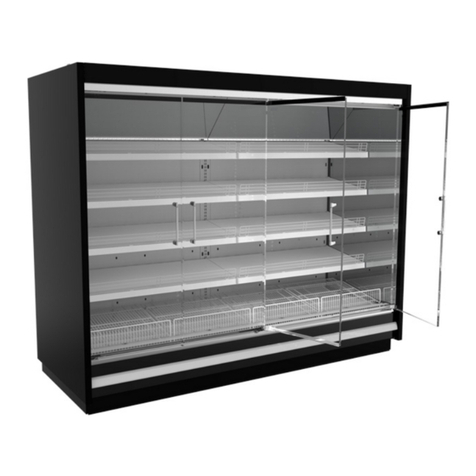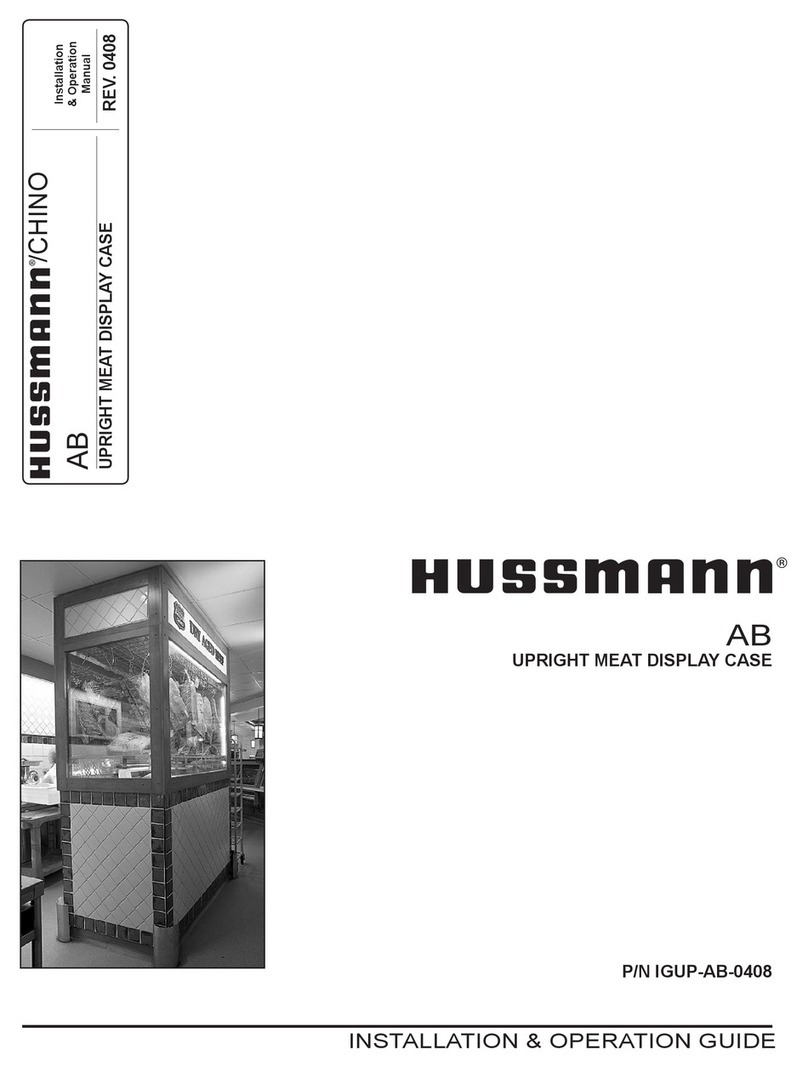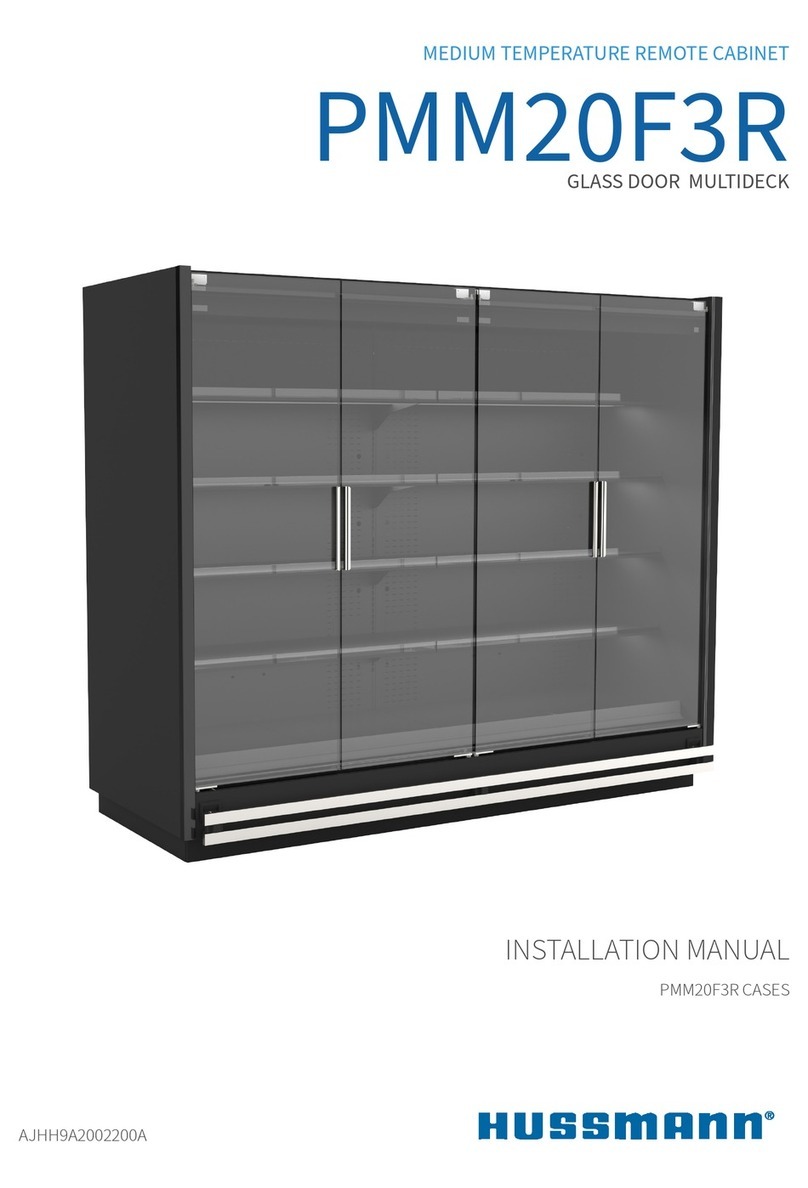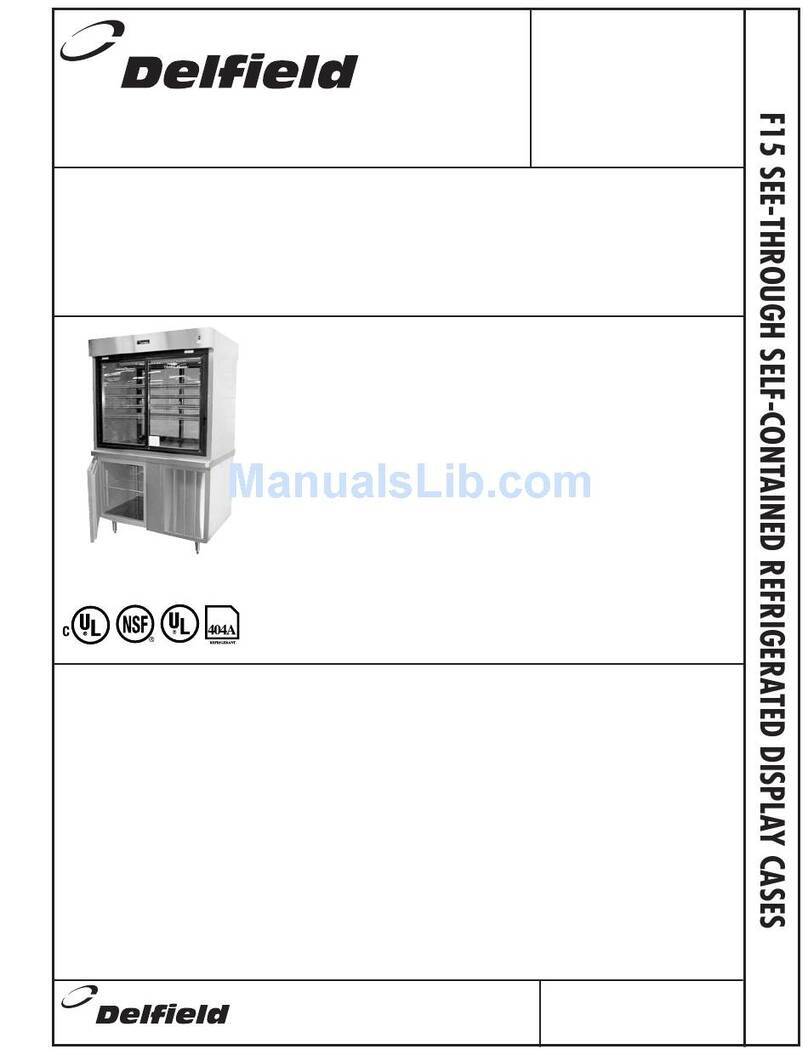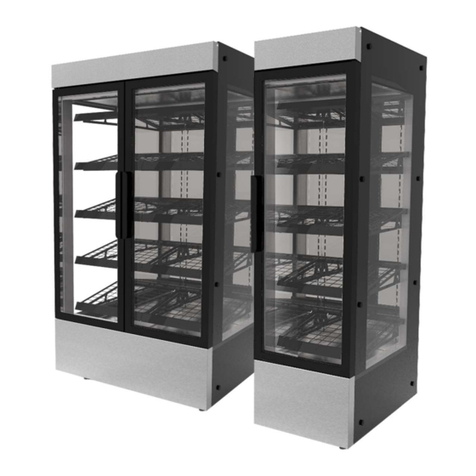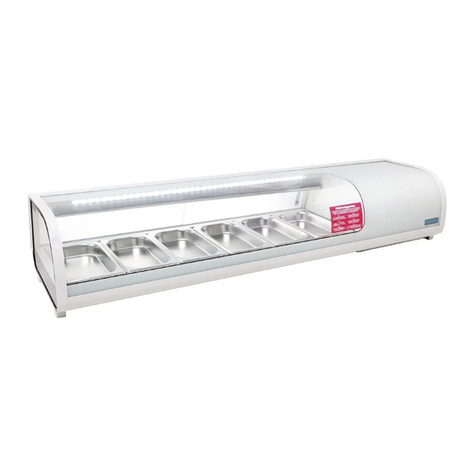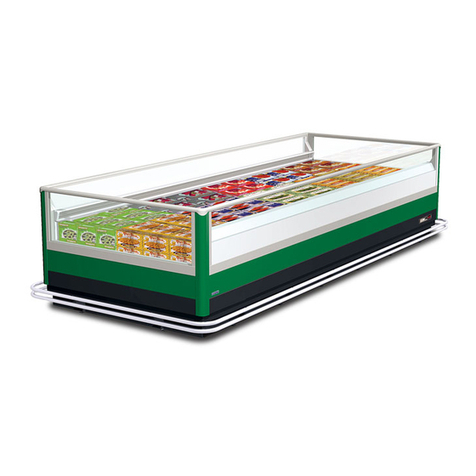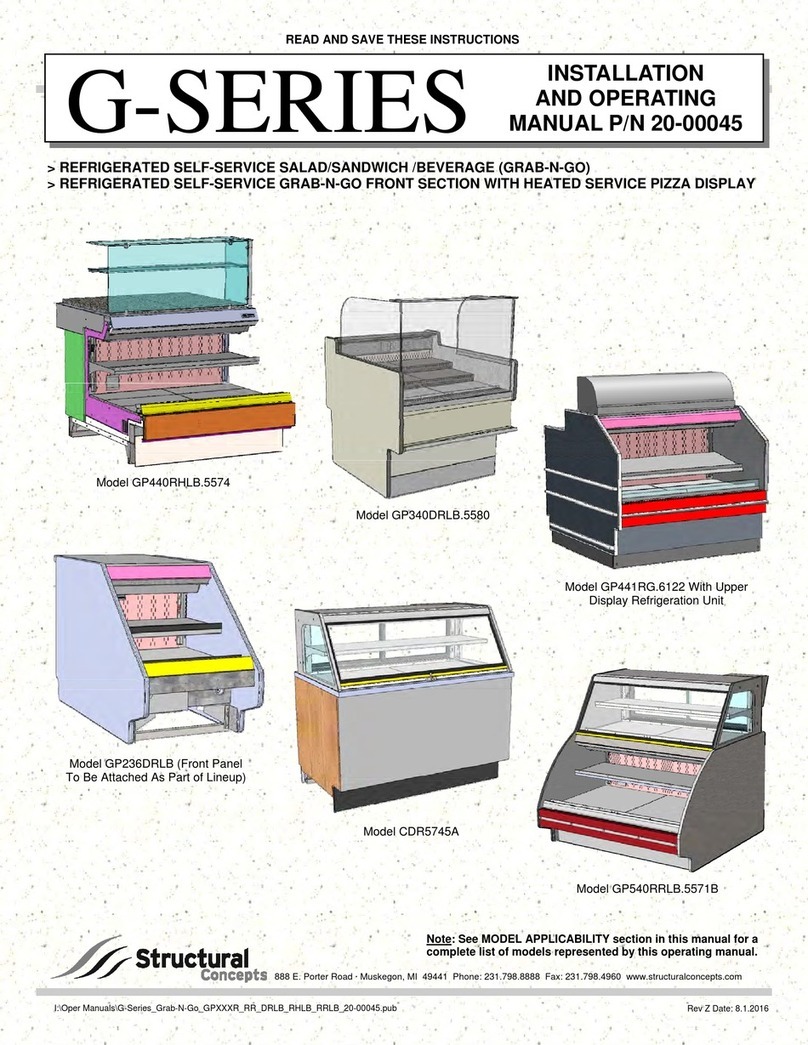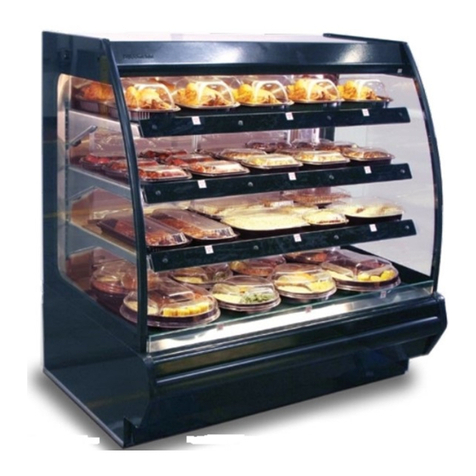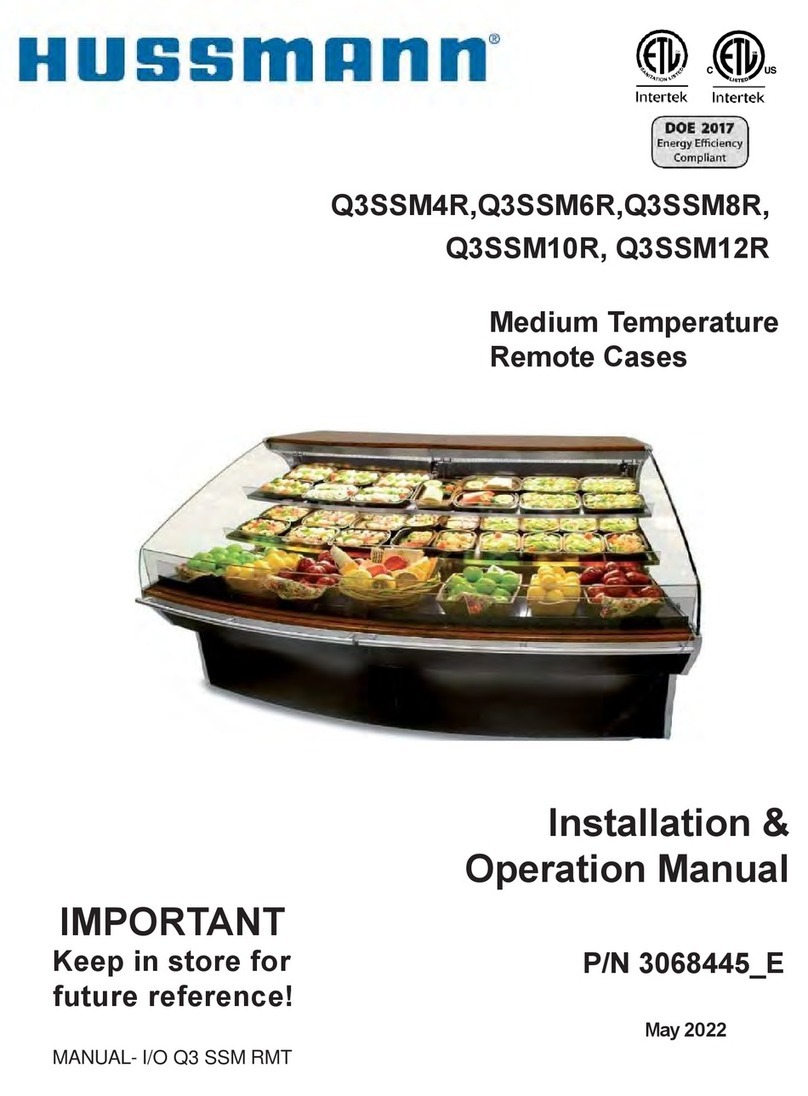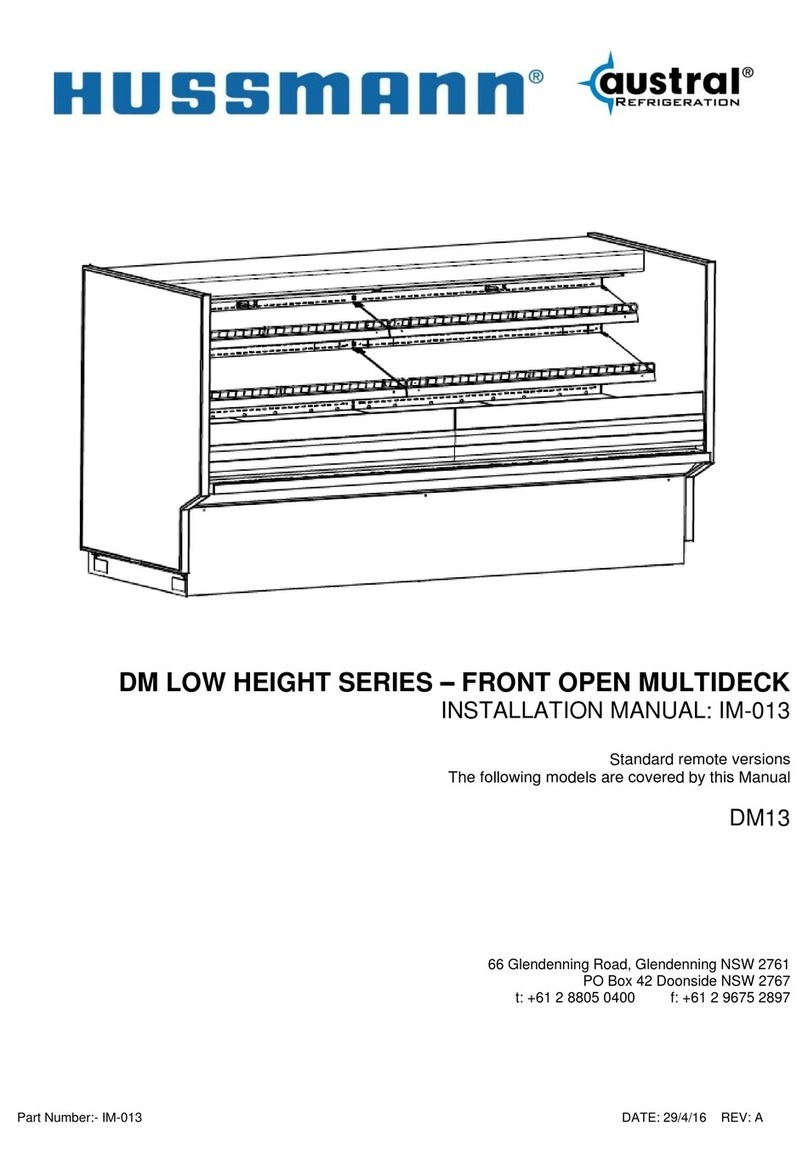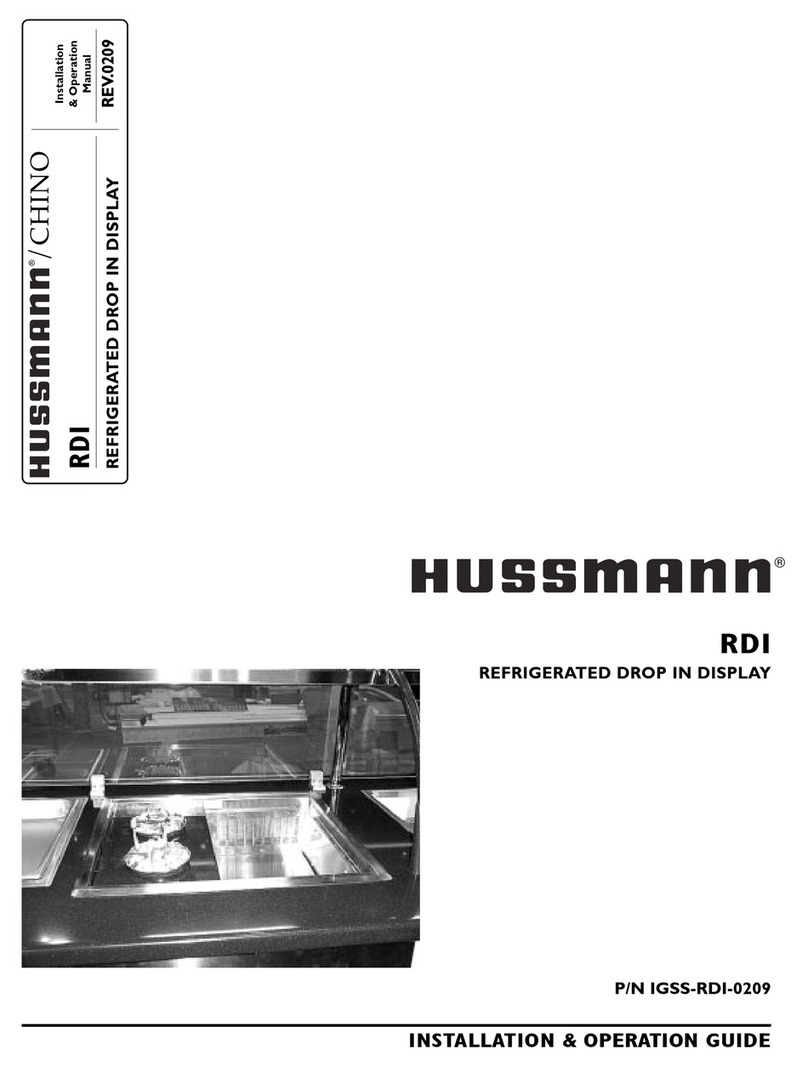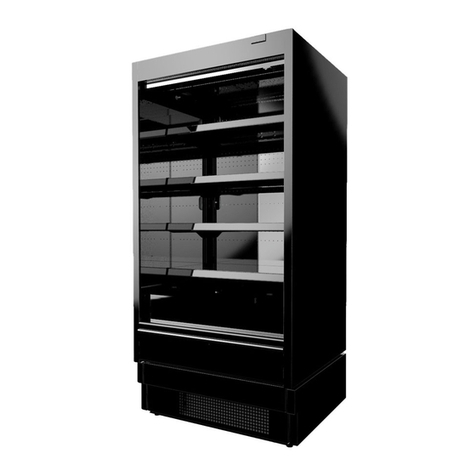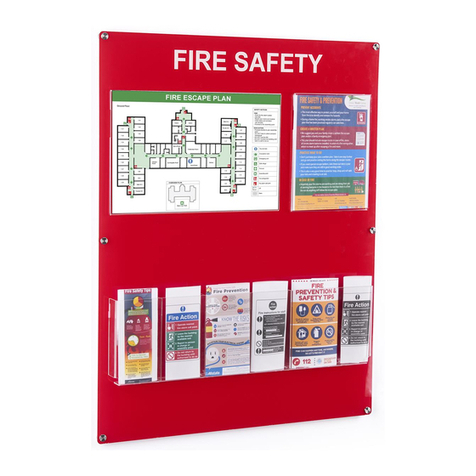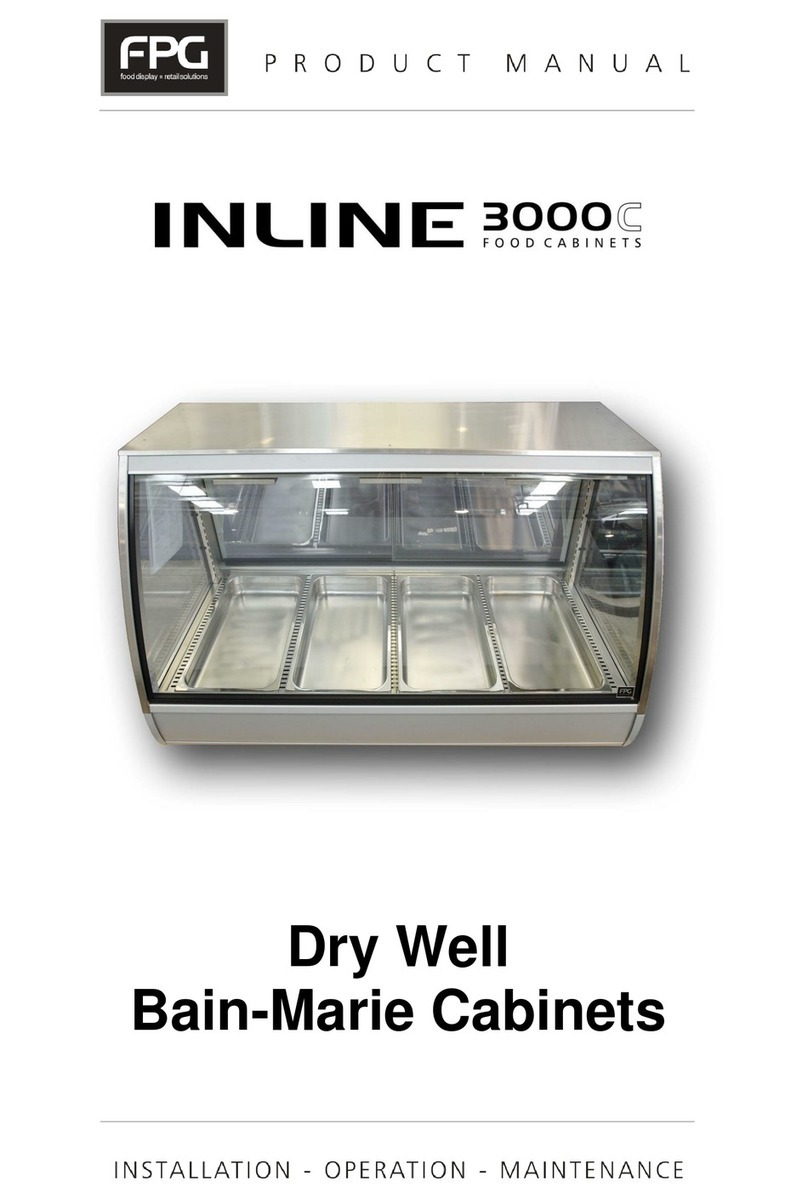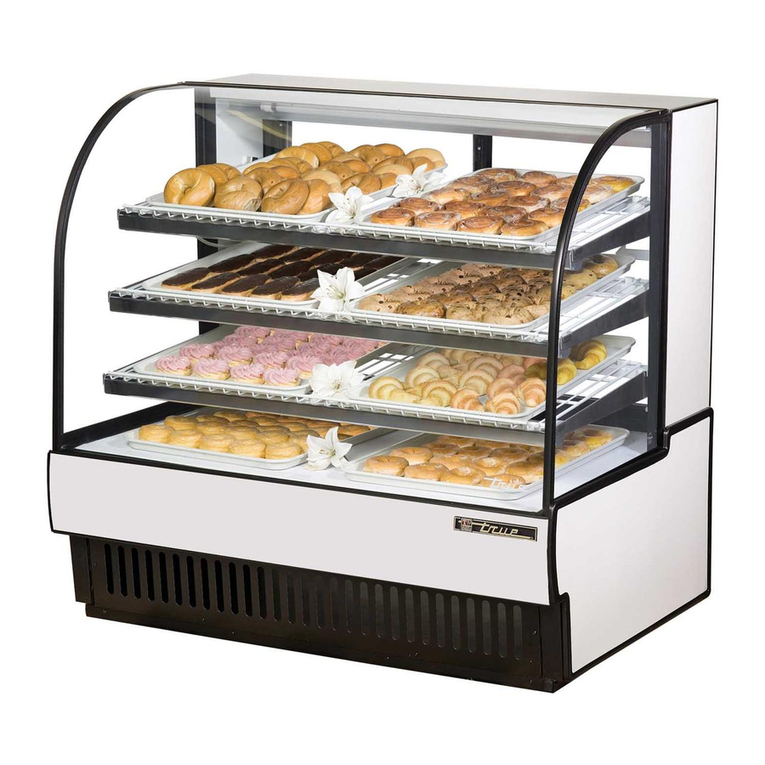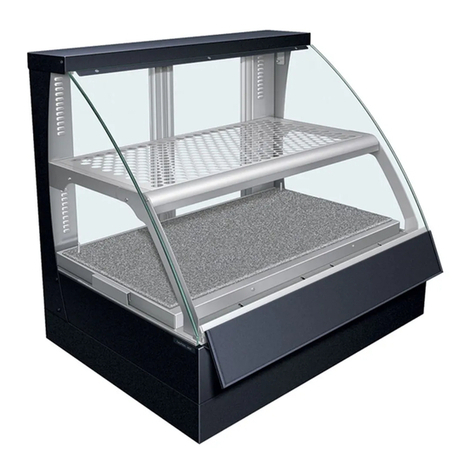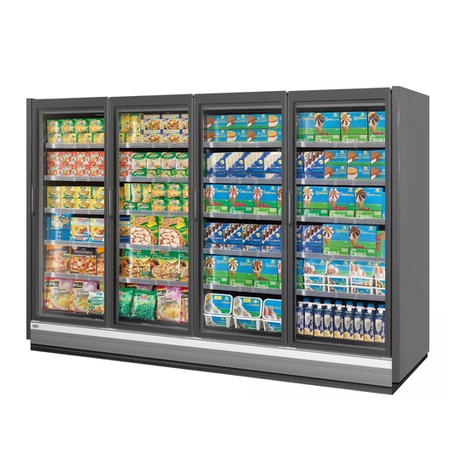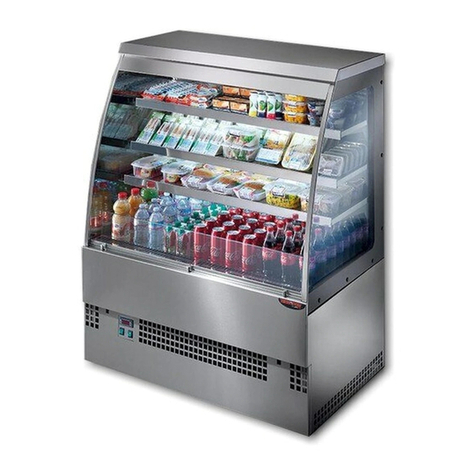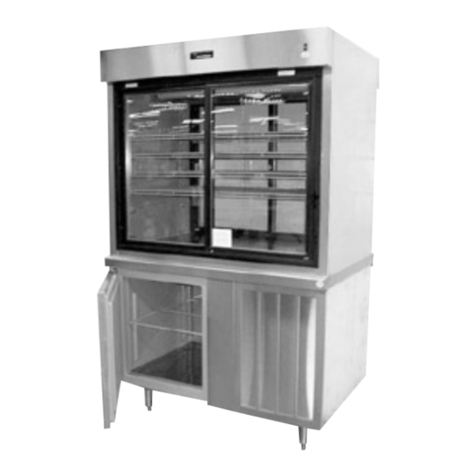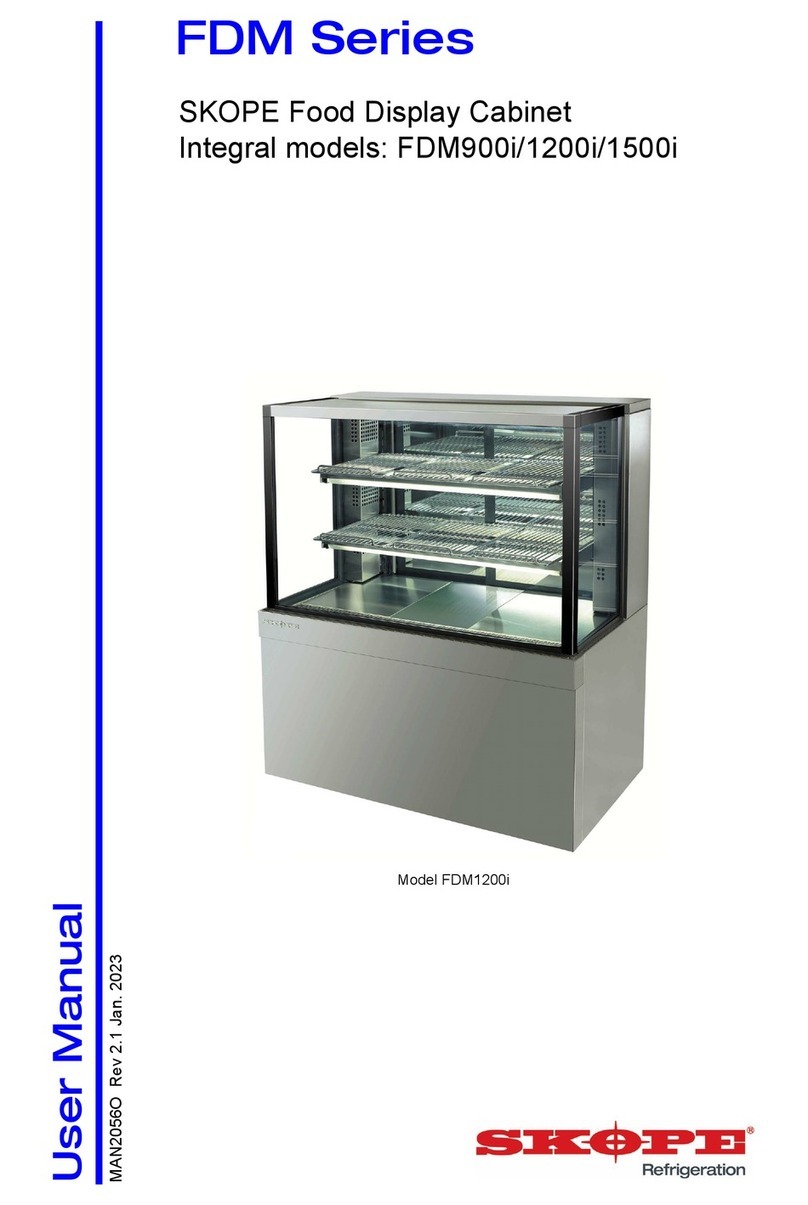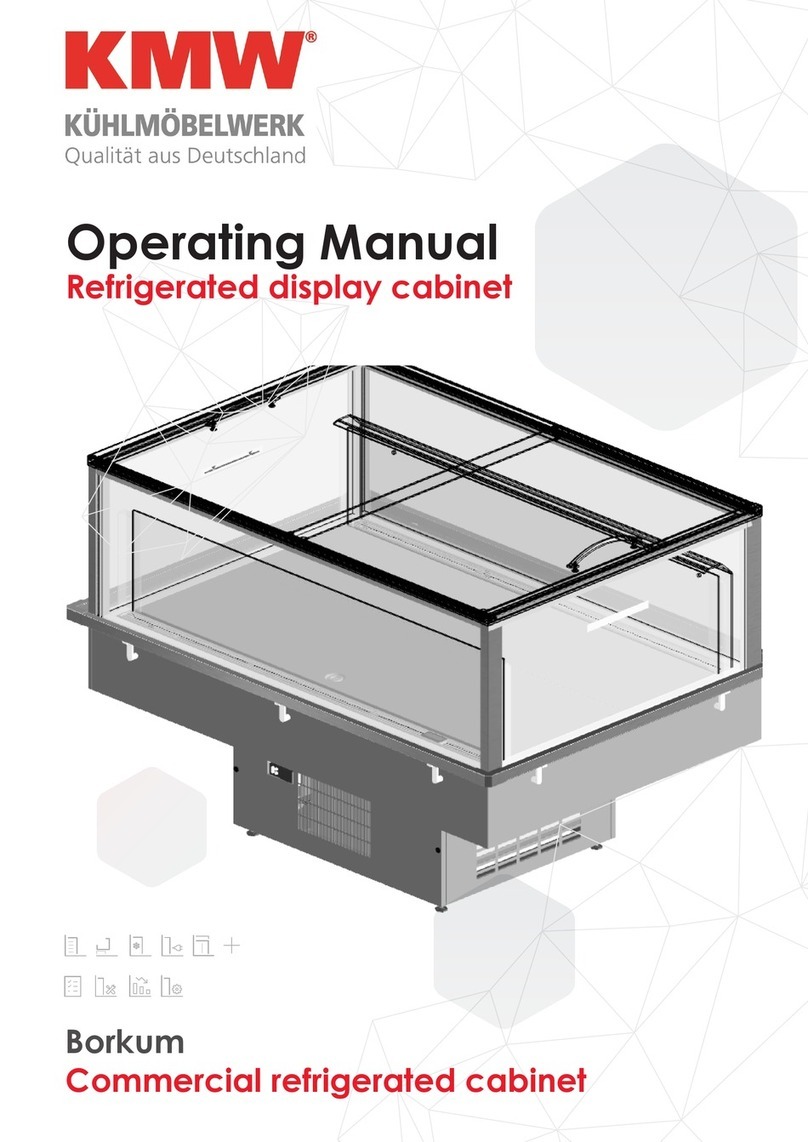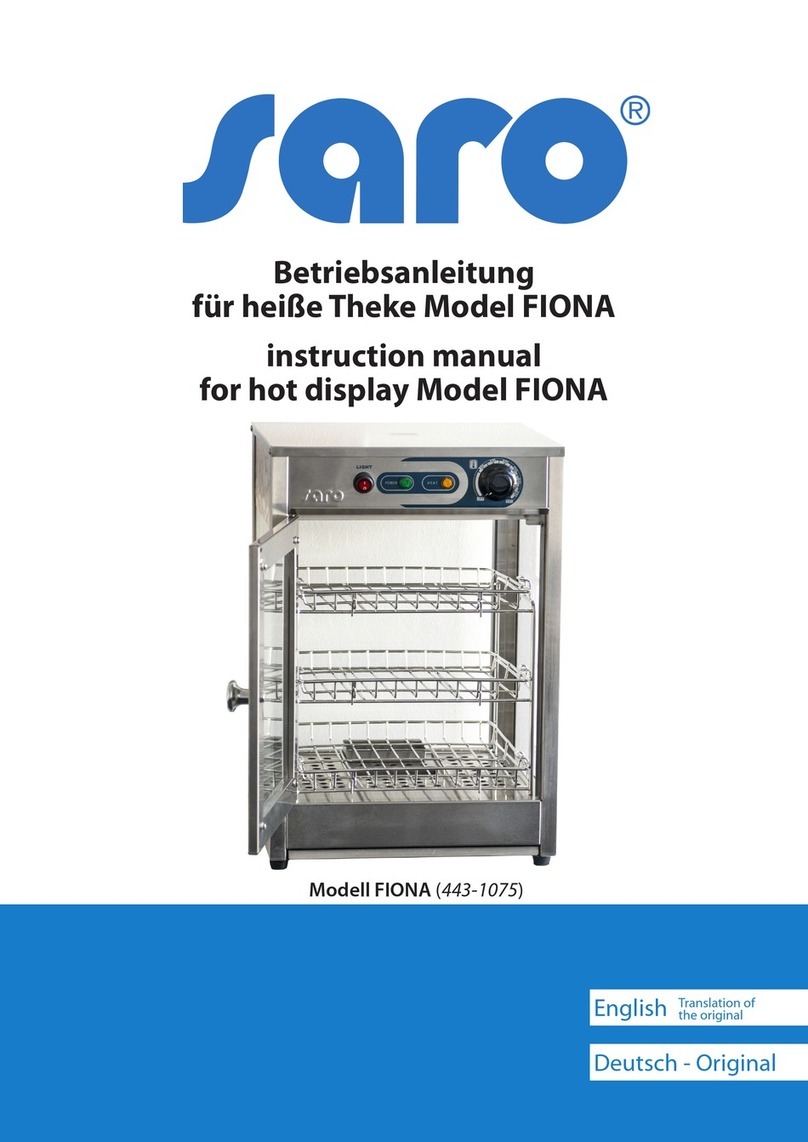
Rev.0210
9
User Information
STOCKING
Impropertemperatureandlighting willcauseserious prod-
uct loss. Discoloration, dehydration and spoilage can be
controlled with properuseof the equipment and handling
of product.Product temperature should always be main-
tained at a constant and proper temperature.This means
that from the time the product is received,through stor-
age,preparation and display,the temperature of the prod-
uct must be controlled to maximize life of the product.
Hussmann cases were not designed to“heat up” or“cool
down” product—but rather to maintain an item’s proper
temperature for maximum shelf life.To achieve the pro-
tection required always:
1. Minimizeprocessingtime toavoiddamagingtem-
peraturerise to theproduct.Productshould beat
proper temperature.
2. Keep theair in andaroundthe case areafreeof
foreigngasses and fumes or foodwill rapidlydete-
riorate.
3. Maintainthe displaymerchandiserstemperature
controlsas outlined inthe refrigeratorsectionof
thismanual.
4. Donot place anyproductinto theserefrigerators
untilall controlshavebeen adjustedand theyare
operatingat the propertemperature.Allow mer-
chandiserto operate a minimumof 6hours before
stockingwith anyproduct.
5. Whenstocking,never allow theproductto extend
beyondthe recommendedload limit. Air dis-
charge and return air flue must be unob-
structed at all times to provide proper refrig-
eration.
6. Thereareventslocated atthe base of the frontof
theglass,just abovethe frontrail.Theseventssupply
acontinuous,gentleflow of air acrossthe front glass
whichinhibits condensation. Do not place any
signs or other restrictive objects on the front
of the refrigerator that will block these vents.
7. Avoidthe use of supplemental floodor spotlighting.
Displaylight intensity has beendesigned formaxi-
mumvisibilityand productlifeat the factory.Theuse
ofhigher outputfluorescentlamps (H.O.andV.H.O.),
willshorten the shelf lifeof theproduct.
8. Coldcoils removeheat and moisturefrom the case
anddeposit this asfrostontothe coil.Thus,a
defrost is required.Theonly othermoisturewithin
the case is that inthe productitself. A single level of
meatwill dry out faster thana fullyloaded case of3–
4levelsof meat.
IMPORTANT STEPS
1. Donot set temperaturetoo cold,asthis causes
product dehydration.See Case Specs for Proper
Temperature:Settings.
CASE CLEANING
Long life and satisfactory performance of any equipment
aredependent upon thecaregivento it.To insurelong life,
proper sanitation and minimum maintenance costs, the
refrigerator should be thoroughlycleanedfrequently.SHUT
OFF FAN DURING CLEANING PROCESS.It can be un-
plugged within the case,or shut off case at the source.The
interior bottom may be cleaned with any domestic soap
or detergent based cleaners. Sanitizing solutions will not
harmthe interiorbottom,however,thesesolutions should
always be used accordingtothe manufacturer’s directions.
Itisessential toestablish and regulatecleaning procedures.
This will minimize bacteria causing discoloration which
leads to degraded product appearance and significantly
shortening product shelf life.
Soap and hot water are not enough to kill this bacteria. A
sanitizing solution must be included with each cleaning pro-
cess to eliminate this bacteria.
1. Scrubthoroughly,cleaning allsurfaces,with soapand
hotwater.
2. Rinsewith hot water,but donot flood.
3. Applythe sanitizing solution accordingto the
manufacturer’s directions.
4. Rinsethoroughly.
5. Dry completelybeforeresumingoperation.
CLEANING PRECAUTIONS
WHEN CLEANING:
• DO NOT USE HIGH PRESSURE WATER HOSES
• DO NOT INTRODUCE WATER FASTER THAN WASTE OUTLET CAN DRAIN
• NEVER ON A SELF CONTAINED UNIT WITH AN EVAPORATOR FAN
• NEVER USE A CLEANING OR SANITIZING SOLUTION THAT HAS AN OIL
BASE (these will dissolve the butyl sealants) or an AMMONIA BASE
(this will corrode the copper components of the case)
TO PRESERVE THE ATTRACTIVE FINISH:
• DO USE WATER AND A MILD DETERGENT FOR THE EXTERIOR ONLY
• DO NOT USE ABRASIVES OR STEEL WOOL SCOURING PADS
(these will mar the finish)
